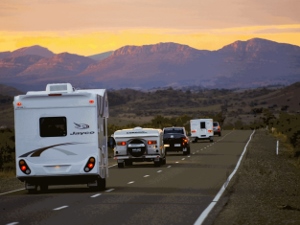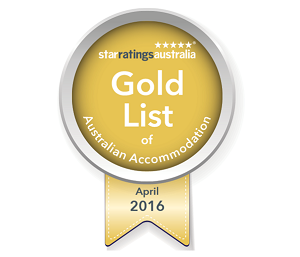
Internet connections for your guest wifi systems: more options
Opinion: Judy Senn looks at what is on offer to run your guest wifi
With close to 90 percent of homes and businesses across Australia now connected to the nbn, it may be time to look at what else is on offer to run your guest wifi system
It was an exciting time when in 2017 the nbn started to heavily roll out its services around Australia. Most of our customers around Australia are now connected in one way or another to the nbn to run their guest wifi systems.
Whether it is Fibre to the Node (FTTN), Fibre to the Premise (FTTP), Fibre to the Building (FTTB), Hybrid Fibre Coaxial (HFC), Fixed Wireless or nbn satellite services, most are connected.
However, we still have a few struggling along with ADSL connections or very slow nbn connections as the nbn offering to their location is substandard, particularly in remote areas. This is proving very frustrating to them and their guests wanting to access fast and reliable wifi and there hasn’t been any real solution until now.
We’ve also had to run guest wifi systems at some sites on multiple nbn connections to ensure that there is enough bandwidth to go around to service the load. One site has six nbn 100/40Mbps connections!
Most of these nbn connections are using the old Telstra copper cable that is susceptible to faults and attenuation which impact the actual throughput speed and reliability of the service. nbn is also a contended service (slows down during busy times) as it is shared by other users on the copper, so it can get congested from time to time affecting available bandwidth. The knock-on affect is slow wifi and complaining guests.
Fibre connections have always been available in some areas, however, the nbn was charging the end user, you, to run the Fibre from the node to the complex and the costs to do so were extremely cost prohibitive, particularly in regional areas.
The exciting news is there are two new internet offerings. One available now, nbn Fibre and one not too far off, SpaceX’s Starlink.
Let’s start with nbn Fibre. The nbn has launched the nbn Business Fibre Initiative. Basically, it is nbn Fibre which was typically only available in capital city centres.
You no longer have to pay for the laying of the Fibre from the node to your complex, the nbn are allowing Internet Service Providers to do this and the nbn absorbs the cost.
This means that regional areas can now increase their capacity at metropolitan prices. nbn has created up to 240 nbn Business Fibre Zones nationally which includes 85 regional centres.
“With wifi becoming as important as running water and electricity to guests, and guests relying on wifi to work at your complex or home school if required, the demands for fast and reliable wifi are increasing.”
Fibre is reliable and scalable, and it is easy to increase speeds/bandwidth as required. It is also uncontended, so you get what you pay for. Fast and reliable internet! More bang for your buck!
SpaceX’s Starlink
I think most of you would have heard of Elon Musk. If you haven’t he is the early stage investor, CEO, and Product Architect of Tesla and the founder, CEO, and Chief Engineer at SpaceX.
SpaceX is leveraging its experience in building rockets and spacecraft to deploy the world’s most advanced high-speed, low latency broadband internet system, called Starlink.
This is a game-changer, particularly for remote and regional areas that rely on nbn Satellite or nbn Fixed Wireless services for internet connections. Both have their limitations and can be problematic with speed and data caps.
Starlink are hoping to have near global coverage of the populated world by the end of 2021, beginning of 2022. There are country regulatory approvals required, so hopefully, Australia will be quick to approve.
It is currently running in beta in eleven countries and if you have been one of the lucky beta testers, you can see speeds from 50Mbps to 150Mbps and latency from 20ms to 40ms in most locations. Latency is the time it takes to send data from one point to the next.
Being beta, it is still a patchy service due to more satellites needing to be deployed but as they deploy more satellites and set up more ground stations, these speeds will improve dramatically, and the service will become more robust. Currently, there are 1,800 satellites.
“I am in a Starlink forum, and some US users are getting up to 250Mbps in areas that they have had no internet service previously!”
You can sign up for this service now; however, there is a waiting list. They take a small deposit upon signing up. When the service is available to your site, you purchase a Starlink kit ($809 AUS) which comprises of a user dish terminal nicknamed “Dishy McFlatface”, a wifi router, power supply, cables and mounting tripod; everything you need to get online. You need a clear view of the sky to connect. Unlimited monthly data plans are $139.
Very reasonable considering most 100/40Mbps nbn plans with unlimited data are $100 to $150 per month.
I mentioned at the beginning of this article that I have a complex that has a very slow nbn connection. nbn has confirmed that this site will never get above 25Mbps due to where they are located and the node they are connected to. This makes a fast and reliable guest wifi system very difficult for this complex. Starlink will be the perfect solution for them and I have encouraged them to get on the waiting list.
The neighbouring complex to them, where we also have our guest wifi system, can easily get 100/40Mbps because they connect to a different node!
Give your guests what they want – fast, reliable wifi.
Director Judy Senn launched Time Out Internet in September 2011. She has over twenty years of IT reseller, hardware and software distribution, sales and business development experience.








What sort of price do you have to pay /month for business fibre? My area has been identified as one of the regional areas that can now apply to get fibre to the premises but the costs I’ve been quoted so far are beyond our budget. They have ranged between $500 – $2000 / month. I just need the equivalent to residental fibre plan for our 20 unit complex. Are there any cheaper options?
Hi Phillip, Please send me an email with your details and address to [email protected] and I’ll see what I can find for you. The prices vary.
Judy, are you aware that SpaceX is not supplying Starlink to businesses?
“Residential Use. Services and the Starlink Kit are for use exclusively at the address you provided in your Order, and only for personal, family, household or residential use.”
Source: https://www.starlink.com/legal/terms-of-service-preorder